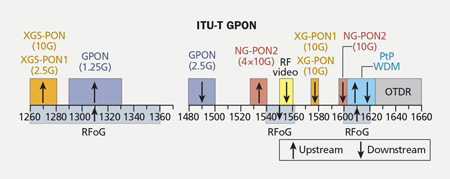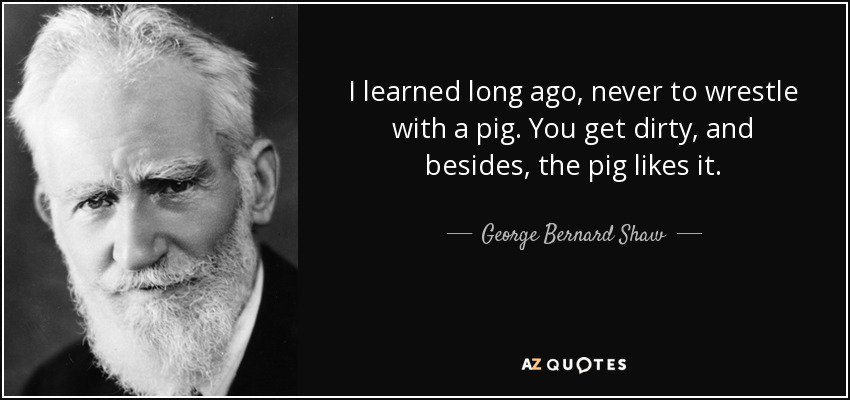Did you read the previous posts?
That's crazy, I was thinking the same thing! It definitely seems like you missed at least one post--not sure if you had a browser issue or whatever. Check it out here.
Anyway, since I have some extra time today:
Let's first acknowledge that you haven't provided any meaningful response to:
1. What will average internet user load be in 10 years?
2. What will average internet user latency be in 10 years?
3. What does it cost to run fiber to sparsely populated users in rural areas? Cost any method you like.
So, again, feel free to provide some actual baseline position on those. It will make this much easier. Honest.
Moving on to something that can actually advance the conversation here:
And let's compare to the cost of Starlink. Satellites need replacing every few years.
In very round numbers, Starlink is going to cost $10B for the initial buildout. For replacements its easy to peg a gen-N constellation+launch at less than $1B (~4000 sats @$100k = $400M, which leaves $600M for launch, which is closer to F9 cost than Starship). Assuming 5 year constellation life and round mathing, in 30 years that's $15B in capex.
Note that most of the lifetime predictions for fiber are mostly in the 20-25 year range, which is why I'm using 30 years.
Pivoting to number of subscribers, and noting that folks here will be quick to point out that my predictions are much less optimistic than some: IMHO the first ~5 years of Starlink will probably average 2-3M subscribers total in the US, ramping up to a steady state of maybe as much as 10M. I'm going to call it a 30 year average of 8M. As I've contested [way] upthread ROW subscriber base likely won't match that of the US, and so for round numbers let's call it 15M average global subscribers over that 30 years. That makes the Starlink math pretty straightforward at $15B for 15M customers over 30 years or, in the US, $8B for 8M customers.
As for fiber data, let me do your homework for you. While we can certainly modify based on input from others with more insight, this random googs find says fiber hookup is $600/user and rollout is $20k/mile. If we normalize total cost to the $8B for 8M subscribers we spent on Starlink in the US, that math basically backs out to being able to run ~150k miles of fiber. Or...spread over 8M locations, an average of 100 feet per subscriber.
Now I won't claim to be an expert on rural US geography by any means, but...100 feet per rural subscriber doesn't quite seem like it will get the job done. Even if we order-of-magnituded the rollout of fiber down to $2k/mile we're still only at ~1000 feet per subscriber to match Starlink cost. Given that we're talking about 8 million of the most rural subscribers in the US, that's going to be a hard case to close. I'd guess each subscriber would need at least an average of 1 mile of fiber, which of course nukes the whole cost story for fiber.
I'll also note that I'm not factoring opex and instead calling it a wash between Starlink and fiber. The $30/user-month for fiber is a HUGE number for 8 million subscribers (like, close to $100B) and is almost certainly higher than Starlink's otherwise more automated and consolidated ops, but opex feels like too much of a rat hole right now so we'll just give fiber the gimmie for now.
So in conclusion, while fiber makes a lot of sense for a lot of people (and nobody's contested otherwise), from a cost perspective it clearly does not make sense for the primary Starlink subscriber base.
Before I move on, since we're on the subject of adding new topics, let's also contemplate the timeline associated with rolling fiber out to those 8M people. An infrastructure buildout of that magnitude--rolling cable to every corner of the USA--would require significant effort from the public sector and, if we're honest, would probably take the better part of 5 years just to make it out of the legislative phase. Layer another 5 years for procurement and actual buildout and we're at 10 years before 8 million people gets service...compared to 5 years for those same folks to receive Starlink service.
And as a corollary, while I think everyone would agree that hanging fiber on existing poles is a great idea, any rational person would agree that it will be a HUGE lift to green light hanging fiber across a material percentage of municipalities spread across the USA on any kind of reasonable timeline. So...you're stuck with a pretty substantial rock and a hard place for the rural fiber rollout where the choices are a) pay to trench or b) wait to hang.
Allow me to add a 4th point to the mix: The environmental impact. Starlink is not environmentally friendly. Disposable satellites, launched from the ground with huge energy requirements and massive emissions every time. Even the transceivers are pulling 150W. We should be building a sustainable future.
Great, setting aside the goalpost moving, at least this is another new topic. Please quantify the environmental impact--via any metric you like--of Starlink servicing hard-to-access low density regions vs the environmental impact of rolling fiber to all of those low density regions.
To get you started, and while by no means comprehensive lists:
For Starlink impact we have:
--Manufacturing of satellites & Rockets
--Manufacturing of facilities & equipment to build space hardware
--Transporation of satellites to the launch site(s)
--Expended fuel from the launcher (Raptor = water + CO2)
--Atomized mass of the satellites
For fiber, we have:
--Manufacturing of fiber
--Transportation of fiber throughout the country
--Manufacturing of facilities and construction equipment for fiber manufacturing and infrastructure buildout
--Physical environmental damage from infrastructure buildout
--What about That Tree Frog environmental impact from infrastructure buildout
--Emissions from equipment used during the infrastructure buildout
--End-of-life fiber environmental impact from material disintegration
Let us know what you come up with. Feel free to make whatever assumptions you like, as long as they're rational and rooted in some fundamental truth.
Last edited:




